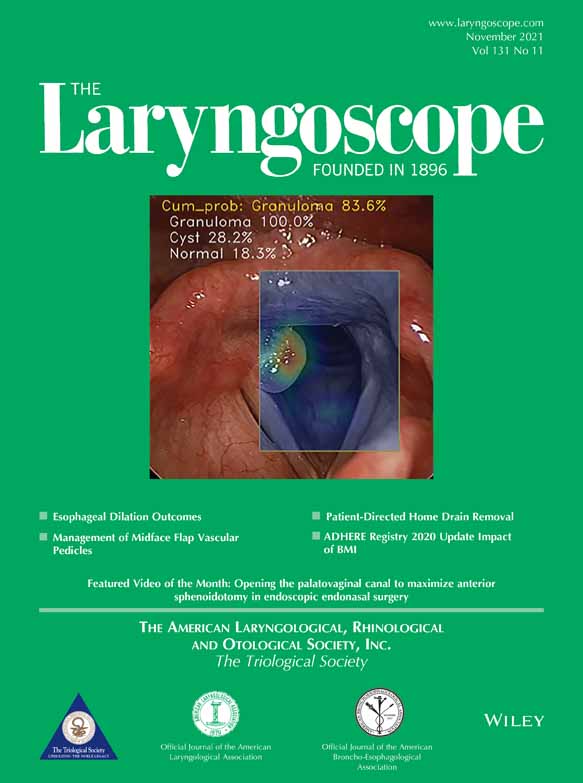Diagnostic Accuracies of Laryngeal Diseases Using a Convolutional Neural Network-Based Image Classification System
Editor's Note: This Manuscript was accepted for publication on April 21, 2021.
The authors have no funding, financial relationships, or conflicts of interest to disclose.
Abstract
Objectives/Hypothesis
There may be an interobserver variation in the diagnosis of laryngeal disease based on laryngoscopic images according to clinical experience. Therefore, this study is aimed to perform computer-assisted diagnosis for common laryngeal diseases using deep learning-based disease classification models.
Study Design
Experimental study with retrospective data
Methods
A total of 4106 images (cysts, nodules, polyps, leukoplakia, papillomas, Reinke's edema, granulomas, palsies, and normal cases) were analyzed. After equal distribution of diseases into ninefolds, stratified eightfold cross-validation was performed for training, validation process and remaining onefold was used as a test dataset. A trained model was applied to test sets, and model performance was assessed for precision (positive predictive value), recall (sensitivity), accuracy, F1 score, precision–recall (PR) curve, and PR-area under the receiver operating characteristic curve (PR-AUC). Outcomes were compared to those of visual assessments by four trainees.
Results
The trained deep neural networks (DNNs) outperformed trainees' visual assessments in discriminating cysts, granulomas, nodules, normal cases, palsies, papillomas, and polyps according to the PR-AUC and F1 score. The lowest F1 score and PR-AUC of DNNs were estimated for Reinke's edema (0.720, 0.800) and nodules (0.730, 0.780) but were comparable to the mean of the two trainees' F1 score with the best performances (0.765 and 0.675, respectively). In discriminating papillomas, the F1 score was much higher for DNNs (0.870) than for trainees (0.685). Overall, DNNs outperformed all trainees (micro-average PR-AUC = 0.95; macro-average PR-AUC = 0.91).
Conclusions
DNN technology could be applied to laryngoscopy to supplement clinical assessment of examiners by providing additional diagnostic clues and having a role as a reference of diagnosis.
Level of Evidence
3 Laryngoscope, 131:2558–2566, 2021




